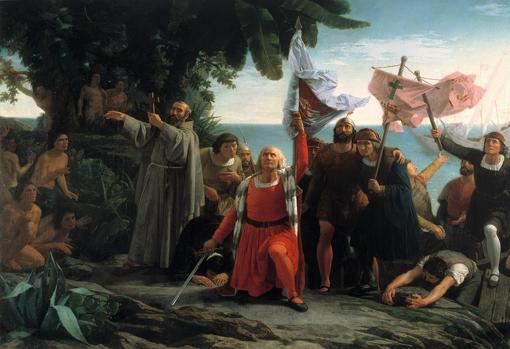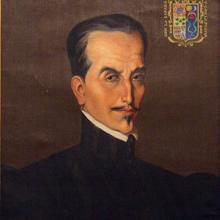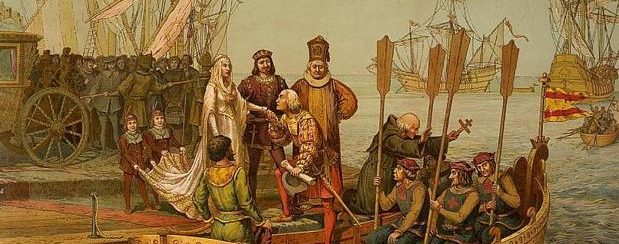Source:ABC
In 1503, Queen Isabel called on Governor Nicolás Ovando, a fundamental man in the first years of European presence in America, to promote mixed marriages, “which are legitimate and recommended because the Indians are free vassals of the Spanish Crown”.
The Spaniards who crossed the pond in the sixteenth century, that of the great expansion through America, hardly accounted for a grain of sand in a mammoth continent of more than 40 million square kilometres. If the Europeans managed to subdue empires that, like the Incas or the Aztecs, had millions of subjects at their disposal, thousands of them elite warriors, and found hundreds of cities, it was, thanks to the collaboration with the indigenous peoples and through the subsequent mixing promoted by the Crown.
New Spain, the germ of what is now Mexico, conserved at least 50% of the indigenous population at the time of independence, and 20% mestizo. A figure that, paradoxically, has not stopped decreasing since the evil conquerors left. Only 23% of Mexicans consider themselves indigenous or of indigenous descent, according to an interracial survey conducted in 2015 by the National Institute of Statistics and Geography (Inegi) of Mexico.
Cohabitation
The mixing between conquerors and indigenous people arose from the first years of the arrival of the Europeans. Accustomed to special treatment with the “other” after centuries of coexistence between Christians, Muslims, and Jews, the Spanish adventurers showed no racial qualms when it came to being related to indigenous women, in many cases coerced into acceding to these relationships.
According to Christopher Columbus, the destruction of Fort Navidad, founded on his first voyage, was due to the habit of the Castilians to mate with up to “four women” and to appropriate the natives at will. Many captains married the daughters of local chieftains in order to inherit land and labor.

However, there were also many women who sincerely fell in love with those men so different from everything known in their world. Over the years, mixed relationships flowed normally. Tecuichpo Ixcaxochitzin, one of the daughters of the Aztec Emperor Moctezuma, was baptized and called Isabel de Moctezuma by the Spanish. Up to three times she linked up with Spaniards, having with them a total of six legitimate children of both sexes and one more daughter that she did not recognize, Leonor Cortés Moctezuma, who was fathered by Hernán Cortés himself.
The conqueror of Mexico also had his first-born and beloved son Martín Cortés with La Malinche, Malintzin, who was the interpreter of the conqueror. The conqueror moved heaven and earth so that Martín was declared a legitimate son by a papal bull of Clement VII in 1528 and always watched over his rights.
In Peru, the inveterate bachelor that was Francisco Pizarro decided in Cajamarca to marry the stepsister of Emperor Atahualpa, Inés Huaylas Yupanqui, an example among his men. The new Peru would be mestizo or it would not be. Inés Huaylas Yupanqui, baptized with this name in honor of a sister of Pizarro, was given as a wife to the old conqueror when Atahualpa was imprisoned by the Spanish.
The Inca Garcilaso
 Born in Trujillo married by the Inca rite and, in December 1534, they had their first daughter, Francisca Pizarro Yupanqui. At the end of the following year, Inés had another son, Gonzalo, who died very young, in 1544. Both would later be recognized as legitimate children by Emperor Carlos.
Born in Trujillo married by the Inca rite and, in December 1534, they had their first daughter, Francisca Pizarro Yupanqui. At the end of the following year, Inés had another son, Gonzalo, who died very young, in 1544. Both would later be recognized as legitimate children by Emperor Carlos.
The testimonies of the chroniclers support that Pizarro treated his first Indian wife with total cordiality and that the relationship seemed consolidated, both for emotional and political reasons. According to María del Carmen Martín Rubio in her biography of Pizarro “The Unknown Man”, the military help of Inés’s mother, Contarhucho, saved Lima when an Inca uprising threatened to ruin everything that Pizarro had conquered in 1536.
For unknown reasons the marriage ended up separating and, shortly after, they married new partners: Francisco with another Inca Princess, Angelina Yupanqui, also Atahualpa’s sister; and Ines with a handsome conqueror named Francisco de Ampuero, this time for the Christian religious rite.
Another case of flagrant cohabitation was the one carried out by the Inca Garcilaso de la Vega. Born in Cuzco, Gómez Suárez de Figueroa received this name by the decision of his parents, a couple formed by an Extremaduran conqueror, Sebastián Garcilaso de la Vega, and a princess of the extinct Inca Empire, Isabel Chimpu Ocllo. However, the position of corregidor of the father prevented them from marrying so as not to harm his political career.
The Inca settled down as a soldier, traveled to Spain, and spent the rest of his life writing, with great brilliance, about the worlds of his father and those of his mother. His literary work is also proof of the great miscegenation between continents.
One of the first prominent conquerors to take an indigenous woman as his wife was Alonso de Ojeda, famous for giving Venezuela its name and already present on Christopher Columbus’s second trip to America. The explorer from Cuenca found an indigenous woman named Guaricha, whom he named Isabel, on the shores of Lake Maracaibo during an exploration trip in the spring of 1499. His original plan was to incorporate the young woman into the service of his home, but finally, the persistence of her, who manifested herself in love with her master, prompted him to marry and have three children with her.
In the Spanish Court, where the beauty of the Indian ignited the highest praise among the chroniclers, Ojeda introduced her as his full-fledged wife. During the last five years of his life, Ojeda lived locked up in the Franciscan convent in Santo Domingo and refused to see his wife anymore. Isabel’s love was so great despite her husband’s attitude that, according to the chronicles, she was found dead on Ojeda’s grave a few days after his death.
Laws to promote marriages
According to the British historian Hugh Thomas, it is estimated that as early as the early 16th century half of the Castilian settlers on Hispaniola were married in some way to indigenous women. The problem is that, even at that time, there were large legal loopholes in the situation of the indigenous people and the type of marriage authorized by the Crown. Fray Bartolomé de las Casas criticized that the degree of marriage was such that the colonists referred to their partners with the term “maids”, hence the King Fernando el Catolico, governor of Castile, approved in 1514 a royal card that validated any marriage between Castilian men and indigenous women.
The law gave true legal status to something that, likewise, the Crown had been promoting for years as a method to facilitate the evangelizing task. Already in 1503, Queen Isabel called on Governor Nicolás Ovando, a fundamental man in the first years of European presence in America, to promote mixed marriages, “which are legitimate and recommended because the Indians are free vassals of the Spanish Crown.”
It should be remembered that in the United States, interracial marriages were not declared completely legal in all its states until 1967 when the Supreme Court ruled unconstitutional the “anti-miscegenic” laws that still survived in some parts of the country.
Share this article
On This Day
- 1572 Andrés Díaz Venero de Leyva founded the town of Guaduas (Colombia).
- 1578 Brunei becomes a vassal state of Spain.
- 1672 Spanish comic actor Cosme Pérez ("Juan Rana") dies.
- 1693 Painter Claudio Coello dies.
- 1702 The Marquis de la Ensenada was born.
- 1741 Spanish troops break the siege of castle San Felipe in Cartagena de Indias (Colombia).
- 1844 The Royal Order of Access to Historical Archives was promulgated.
- 1898 President Mckinley signed the Joint Resolution, an ultimatum to Spain, which would lead to the Spanish–American War.
History of Spain
26 August 2020
27 January 2021
Communism: Now and Then
23 December 2022
28 July 2021







